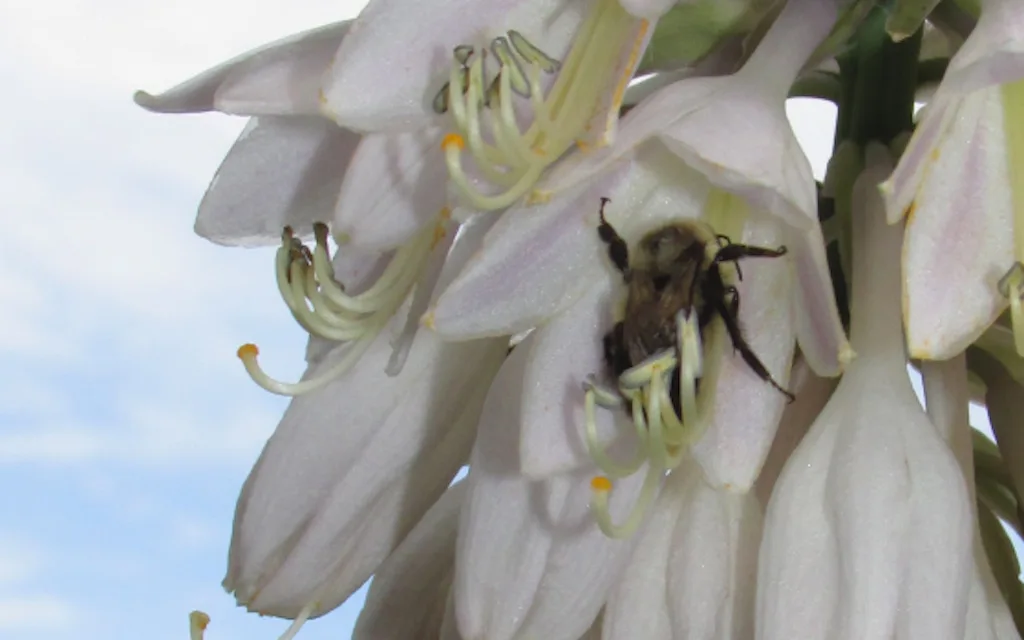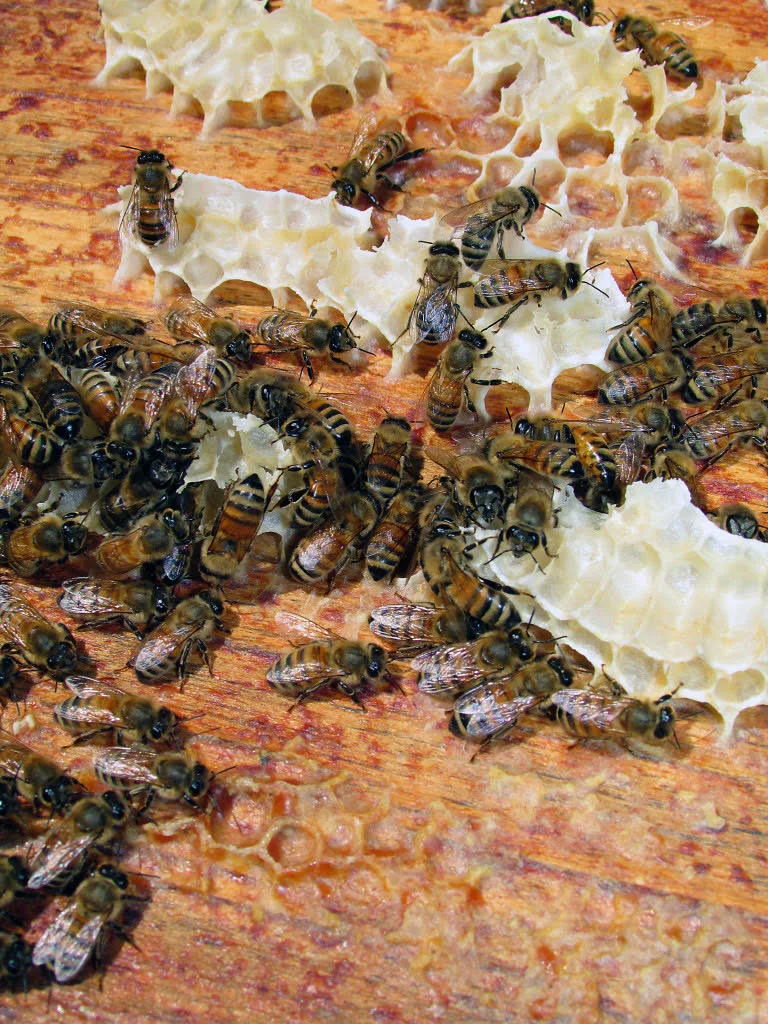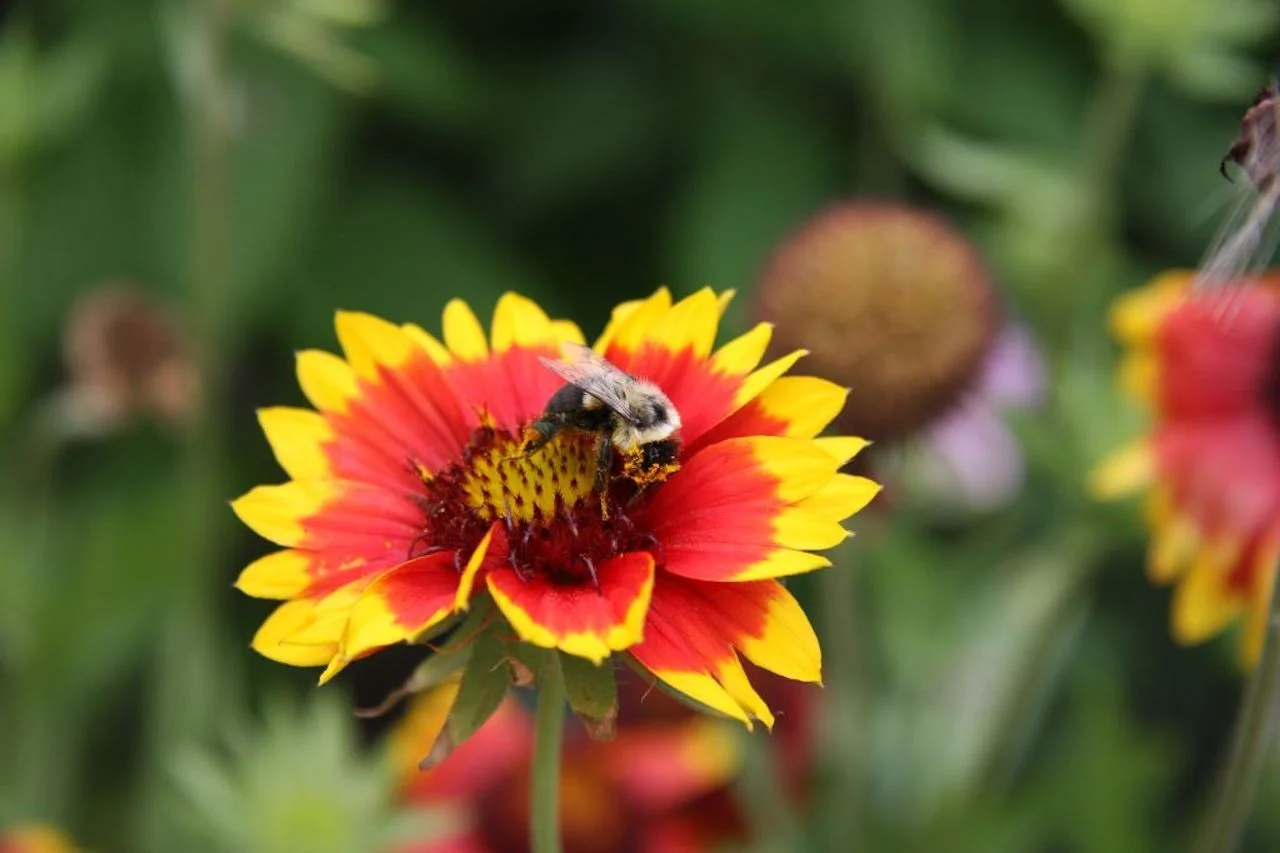
Honeybees can pose a threat to wild bees, here's how
Studies have indicated that honeybees are battling with native bees over resources, resulting in some complications for the latter.
Honeybees and wild bees both serve the greater good by pollinating our crops, but there is research that indicates competition between them over resources can have negative repercussions for the native species.
Studies, including a review published in 2021 from Curtin University, found the introduced European honeybee could pose a risk to native bee populations when colonies compete for the same nectar and pollen sources in urban gardens, and areas of bush.
SEE ALSO: Why 'grow it and don't mow it' is ideal spring gardening tactic
Vicki Wojcik, director of Pollinator Partnership Canada, spoke with The Weather Network in 2021 on the effects. She is also a co-author of a similar study done in 2018 that highlights the potential impacts of native and honeybees competing.
She acknowledged more research needs to be done to secure conclusive answers on the rivalry and risks to all native species. However, trends have indicated that bumblebees are seeing some adverse effects, Wojcik said.

(Debbie Patterson/Submitted)
BUMBLEBEES GET SMALLER IN SIZE, COLONIES SHRINK
"Bumblebees and honeybees do look like they compete for resources. When that does happen, honeybees appear to be doing better at getting those resources and the bumblebees have less," said Wojcik. "Their colonies can be smaller, they make fewer baby bees, they make fewer queens...that’s where the research has basically stopped.”
She noted in landscapes where honeybees were managed, the bumblebees were smaller in size, correlating "really well with how much food" they get.
“Some species will always be the same size, no matter what. But some species, the more food they get, the bigger they grow. Bumblebees are like that," said Wojcik.
Other native species that have been impacted are the mason, leafcutter and sweat bees, which have reportedly seen a drop in reproductive output — one of the ways competition is found, the director of Pollinator Partnership Canada said.

(Nathan Howes)
LANDSCAPES POSE 'POTENTIAL CHALLENGES'
The issue of honeybees and wild bees vying for food and habitat stems from the landscapes in which they are interacting. In North America, those landscapes should be limited, however, because honeybees are an introduced agricultural species from Europe, she explained.
"Beekeepers do look for certain types of natural landscapes or sometimes managed landscapes, as well, to produce honey. Those are the areas where we have some potential challenges," said Wojcik.
She also stated that relocating honeybees to an area unoccupied by native species isn't an option because "every landscape has wild bees."

(Nathan Howes)
“The best strategy is to be really mindful and think about where honeybees are presenting the least risk to wild bees. Those definitely are in agricultural settings," said Wojcik.
The challenge the competition poses is more about a managed species versus a wild species and if one has an advantage over the other, Wojcik noted.
"Because of how interrelated all of these species are with our ecosystem and our economy, as well, it's a tough decision to make when we have to really look at how we're going to manage our pollination resources better," said Wojcik.
RESILIENCE OF SPECIES MEANS THEY CAN COEXIST
The economic and agricultural value of honeybees and wild bees in Canada is quite significant. According to the federal government, it's estimated that honeybee pollination directly contributes anywhere from $4 billion to $5.5 billion to Canada's economy every year.
Meanwhile, there are hundreds of native bees in Canada responsible for pollinating numerous plants, like the honeybees. But wild species such as the bumblebee or mason bee are actually more effective and efficient pollinators than the honeybee. Some wild species also emerge earlier in the year than honeybees, making them key pollinators of early-spring blossoms.

(Canadian Wildlife Federation)
As well, wild bees also contribute a great deal to the economy through their pollination services. For example, in Ontario alone, commercially raised bumblebees generate approximately $502 million for the province each year.
Despite the competition between the wild and honeybees, Wojcik assures us that both varieties can peacefully coexist without having to sacrifice one for the other in conservation efforts. She said "it's not one vying for this ultimate space, excluding the other."
"There is room in the natural system and in all these systems for honeybees and wild bees to coexist because pollination systems are diverse and complex. They're better when there's more different species," said Wojcik.
"[This] makes the act of pollination, going forward into the future, more reliable, more stable and more resilient."
Thumbnail courtesy of Getty Images (honeybees) and Nathan Howes (bumblebee).
Follow Nathan Howes on Twitter.
